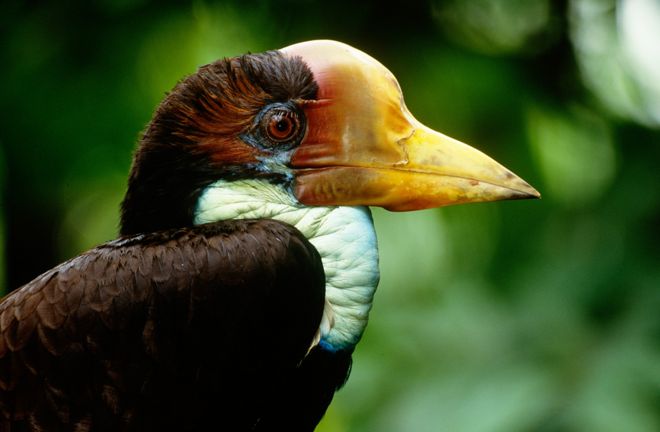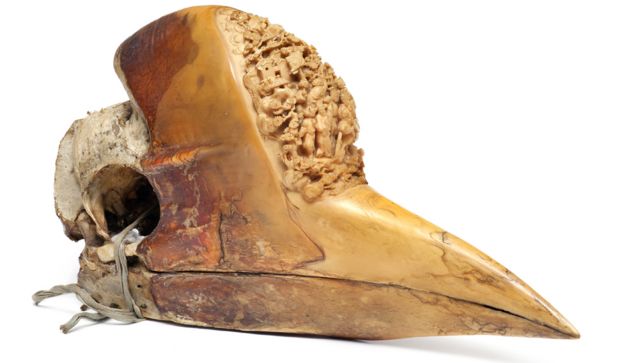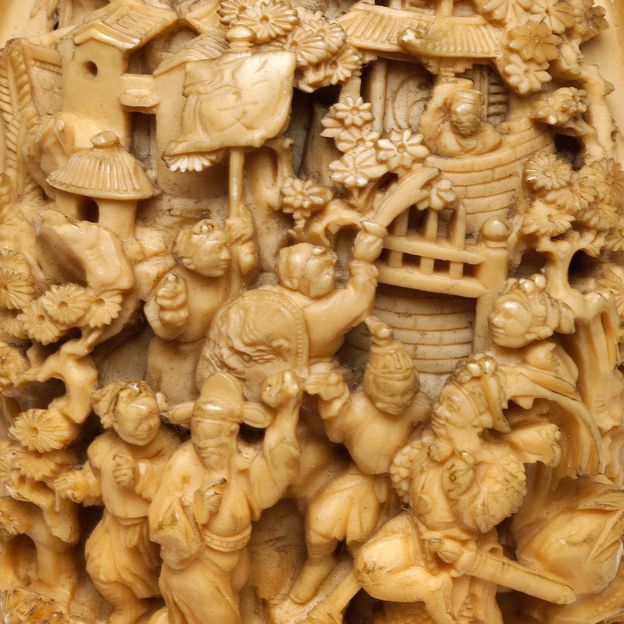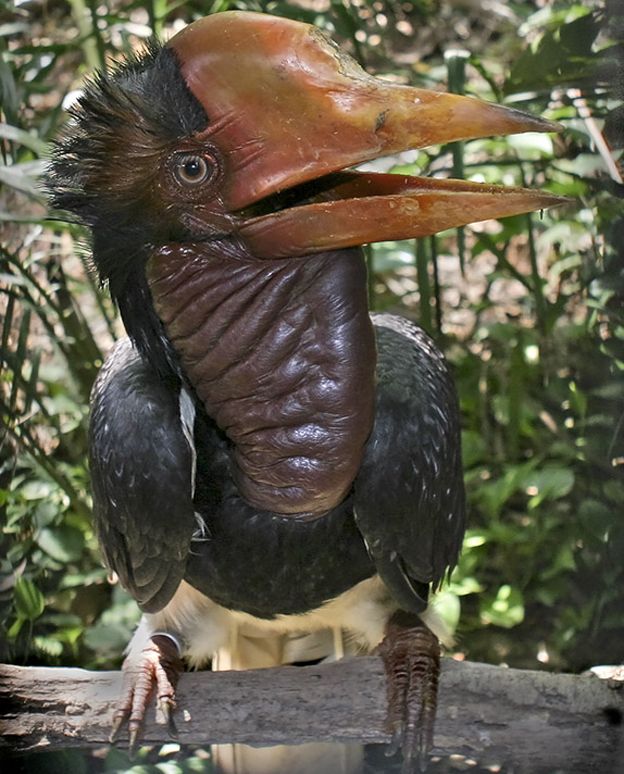In the jungles, forest enveloped
mountains, meandering rivers and paddy fields, sandy beaches, and rocky cliffs
birds intricately weave their lives and needs (food, shelter and nesting sites)
within these diverse habitats that span the island of Borneo. Three Sarawak-based
photographers, Ch'ien C. Lee, Collin Cheong, and Hans Hazebroek, in partnership
with the Sarawak Biodiversity Centre, put together a week-long photograph
exhibition, that brought Sarawak’s feathered residents and their habitats to a
popular Kuching mall, The Spring.
 |
| Oriental Darter, |
The larger-than-life still photographs illustrated intricate
details of Sarawak’s and Borneo’s birds that inhabit the forests, shorelines
and gardens. Collin, a licensed land
surveyor by profession, is a passionate recorder of the natural world. He is particularly interested to highlight the rich natural fauna and
flora in Borneo and the importance of conserving them for the future.
His passion is clearly stated in
a photograph of an Oriental Darter (‘Anhinga melangaster’) known in Malay as
‘Burung Kosa’, a locally common freshwater resident. In this surreal photograph its sinuous neck twined amongst
near-transparent reeds.
Ch’ien, a botanist by training and
a professional photographer, has several publications on Nepenthes, pitcher
plants, to his credit (www.wildborneo.com.my). He skillfully caught the very rare
and highly endangered Dulit Frogmouth (‘Battachostomus harterti’). This bird,
which when sitting appears to be a tiny leaf pile, is marvellously clear
against the out-of-focus background. It has a restricted range and can only be
found on Mount Dulit and in the Kelabit Highlands in Northern Sarawak.
In another photograph, the intricate
details and the long distinguishing tail feathers of the endemic Asian Paradise
Flycatcher (‘Terpsiphone paradisi’), captured by Hans was shown in its full
glory against the blurred greenish background.
Hans, a geologist by training,
has co-authored with Abang
Kashim bin Abang Morshidi three books
about Sarawak's national parks: including'National Parks of Sarawak', 'A Guide to Gunung Mulu National Park', and 'A Guide to Bako
National Park' as well as two publications about Sabah's natural wonders 'Maliau
Basin – Sabah’s Lost World' and 'Danum
Valley — The Rain Forest' with Tengku Zainal Adlin and Dr. Waidi Sinun. For
Hans, photography is an invaluable tool for making the
wonders of these forests more accessible to others and to stimulate their
interest in the natural world and venturing out into it.
Hans explained that powerful
camera equipment is needed to capture these types of surreal, painting-like
photographs. This equipment enables the photographer to focus on the details of
the bird with little or no interference from the background. He added that patience
and a love for wildlife is necessary to get the perfect picture and sometime he
takes over a hundred shots to get a single perfect one.
Hans said that the exhibition
was organized to stir interest and awareness for the diverse species of birds
that inhabit Borneo. It was popular
with shoppers and visitors who popped in for a glimpse of Borneo’s birds. I was
enthralled by the photographs and returned to each one several times to breathe
in their stunning beauty.
Bird watching is one of the
fastest growing hobbies in the world and it can be carried out almost anywhere
and any place. Bird watching in
gardens and parks is the perfect starting point for novices. The birds can generally be seen as they
flit about the garden feeding on insects, resting on branches or feeding on
flowers. Colin caught the domestic side of a frazzled Pied Fantail (‘Rhipidura
javanica’) feeding several famished hatchlings with wide-open beaks begging for
food. This bird is a common garden and open countryside resident that flits
about hunting for insects to feed on.
For some, as with Hans, Collin
and Ch’ien, hobbies can grow into a profession. Tourist guides who are passionate birders can become
involved in the ever-expanding field of bird watching tourism.
The
Malaysian Nature Society Kuching Branch (MNSKB), in collaboration with the
Ministry of Tourism Sarawak (MOTS) organised, a Beginners Birding Workshop BHR
from October 29 to 31. The
participants, including 19 tour guides, four park guides and one tour operator,
developed bird identification skills as well as those needed to be a bird
watching guide.
Rosli bin
Suleiman commented he had learned about bird habitat from the workshop and he
intends to become a birding guide. His partner, Dolores Lim, said the training
was an eye-opening experience.
Rose Au, in the workshop said
that birding tourism
is a niche market and that these visitors aim to see rare and endemic species. According
to the ‘Phillips Field Guide to the Birds of Borneo’ Borneo has 55 endemic
species. Tourists engage guides to ensure that they see ones on their checklist
of must-sees.
Rose, who is
the Vice Chairperson of MNSKB, said that some of the hot endemic Borneo species
include the Pygmy White-Eye (Oculocincta squamifrons), which is also known as
the Borean Ibon. This rare bird of the lower mountains is frequently and easily
seen the Borneo Highlands Resort (BHR) in the Penrissen Highlands.
The first Sarawak
Bird Race, which was organised immediately following the Birding Workshop, on
November 1, 2015, was a fun half-day affair that gave an opportunity for the
freshly minted and seasoned birders to develop their bird watching and
identification skills.
The
participants in a bird race compete to see the greatest number of species
within a specified period of time and area. The top team in this Bird Race went to Eagle Eyes, composed
of Hans Hazebroek and James Lee Fung Onn, who saw 33 species.
Hans advised
novice and expert birders to love and respect birds as well as nature.
Ms Connie
Christopher Kesa, Principle Assistant Secretary of MOTS in her closing address
said that commented, in her closing address, that the next bird race in Sarawak
would be organised in 2016 during late October or early November.
The Sarawak
Bird Race is the latest addition to the bird race fraternity in Malaysia. Fraser’s Hill International Bird Race (http://www.tourism.gov.my/en/events/2014/6/frasers-hill-international-bird-race)
celebrated its 28th race in May 2015 is the oldest of the group. It began in 1988 with five competing
teams and in 2015 the 23-hour race hosted 44 teams from around the world and 60
secondary and post secondary students.
Interestingly, Lim Kim Keang from Singapore was a member of the 1988 and
2015 winning teams.
The Sabah
Borneo Bird Festival (http://www.borneobirdfestival.com), another
internationally recognized Malaysian bird race is in its 7th
year. In 2015 this annual
celebration of birds was at the renowned as a bird watching destination Kinabalu
National Park from 23 to 24 October. Phillips in his bird watching guide for
Borneo indicates that most unique species can be seen at this park.
Sarawak, as
lamented by Ronald Orenstein, Anthony Wong,
Nazeri Abghani, David Bakewell, James Eaton, Yeo Siew Teck and Yong Ding Li in
their 2010 article, ‘Little-Known Area
Sarawak—A
Neglected Birding Destination In Malaysia’ published in BirdingAsia, has
despite having 22 of the 55 internationally recognized Important Bird Areas
(IBA) in Malaysia, along with several national parks, is not well known as a
birding destination. Many birders
opt to visit either Sabah or West Malaysia, which have international
reputations as birding destinations.
The authors cited several reasons for this including accessibility to
the good birding sites and the lack effort to get birders to the state. Although, it is hoped the Sarawak Bird
Race will help to put Sarawak on the bird watching map.
However,
there are, as the authors pointed out, several national parks, including Gunung
Gading, Kubah and Mulu ,and IBAs including the Penrissen Higlands and
Bako-Buntal Bay that are easily accessible and facilities, that host rare
species. The Bako-Buntal Bay is a recognized overwintering
stop for numerous migrant shorebirds including the globally threatened Chinese
Egret (‘Egretta eulophotes’).
Significant numbers overwinter here and it probably has the highest
concentration in Borneo.
Birds are intricately woven into the patterns of life in Sarawak, so is
it not time for us to gaze in wonder at nature’s miracles?






































